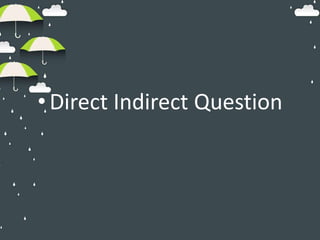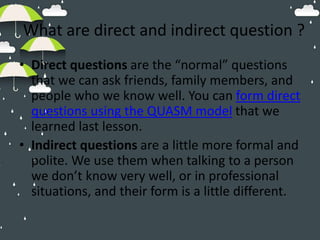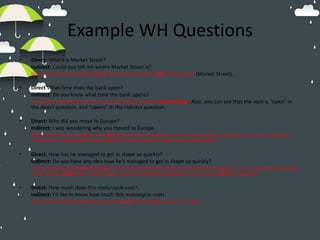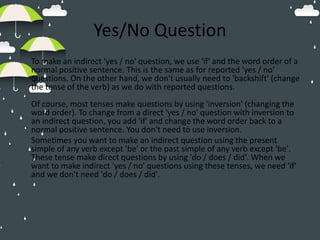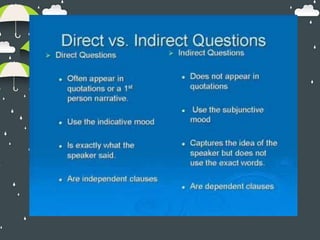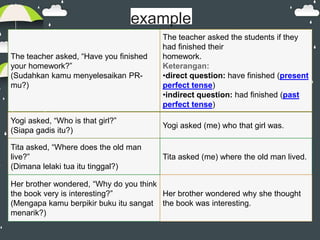The document summarizes the key differences between direct and indirect questions. Direct questions follow normal questioning structure, while indirect questions are more polite and formal, avoiding inversion. The document provides examples of changing direct questions to their indirect equivalents through various grammatical structures, including changing word order and removing auxiliary verbs. Key differences between direct and indirect 'wh-' questions and yes/no questions are outlined.

